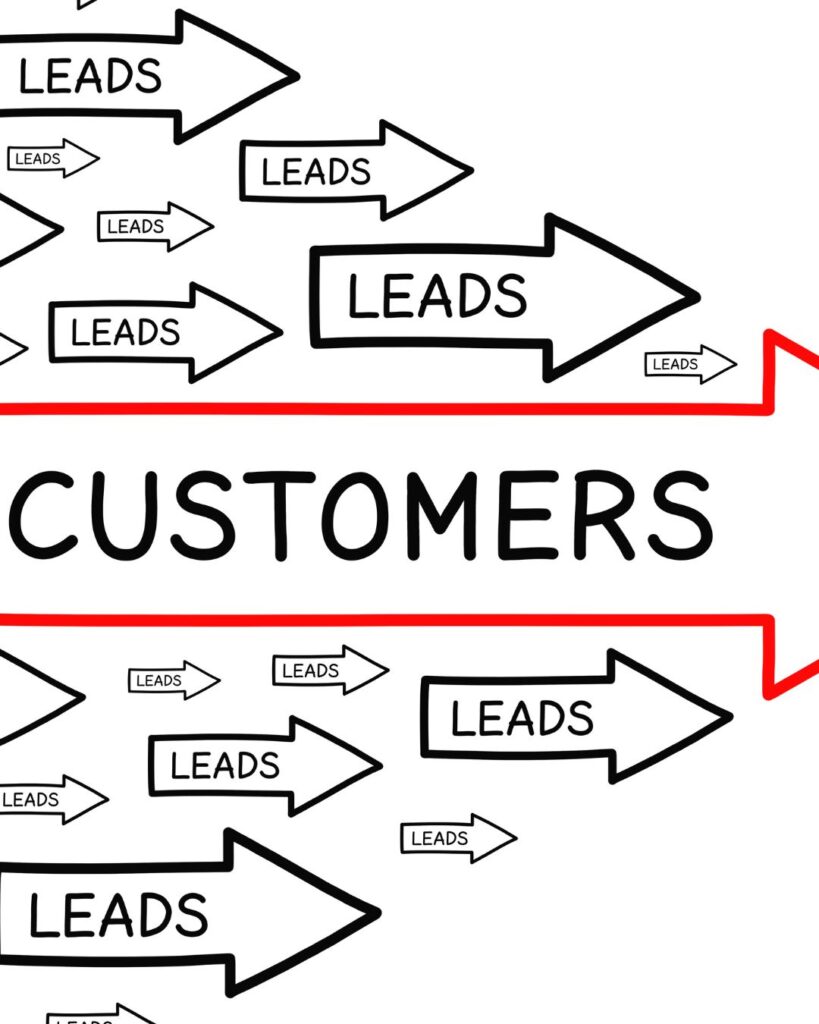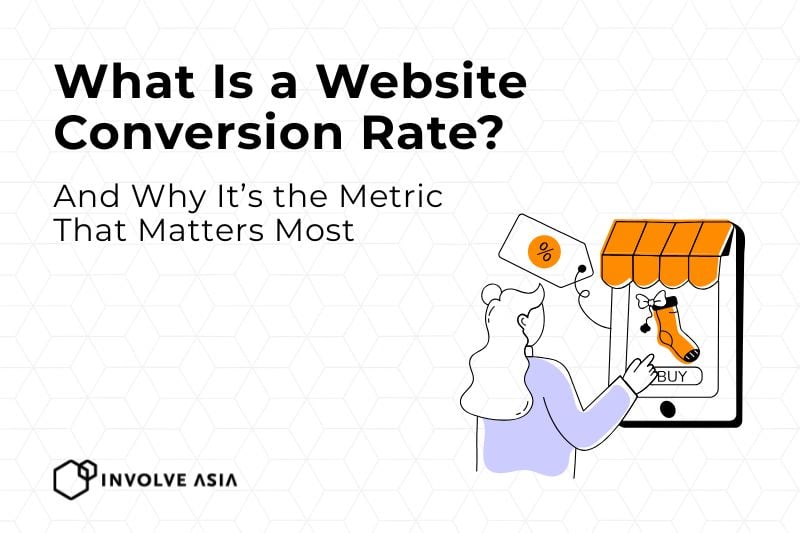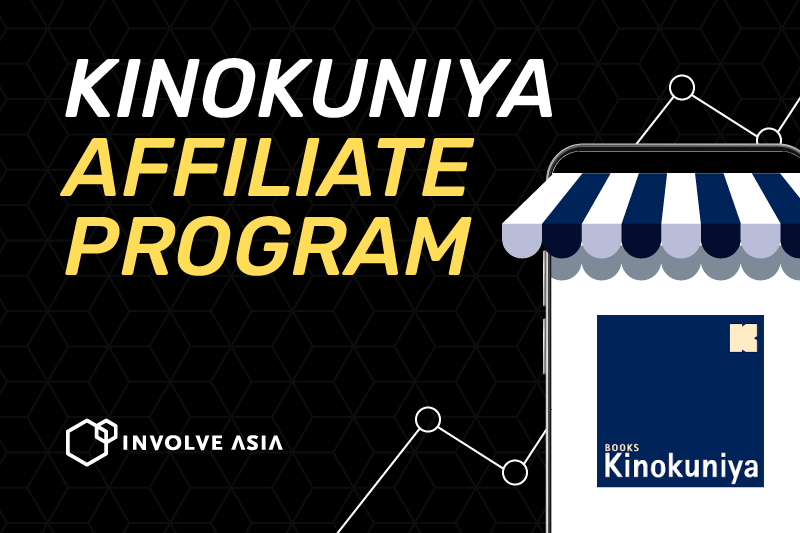You’ve launched your website. You’ve set up the design, content, and maybe even started driving traffic. But there’s a crucial metric that tells you if all that effort is actually working: website conversions.
Now you’re wondering… “What is a website conversion rate?”
Let’s unpack what website conversions really are, why they matter, and how you can get more of them—without needing a full site overhaul.
What Is a Website Conversion Rate?
What Does “Conversion” Mean?
A website conversion is when a visitor takes a specific action you want them to take. That could be making a purchase, signing up for a newsletter, filling out a contact form, downloading an eBook, or even clicking a button.
Micro vs. Macro Conversions
- Micro conversions: Smaller actions that show engagement (e.g., watching a video, adding to cart).
- Macro conversions: The main goal (e.g., completing a purchase or submitting a lead form).
Why Website Conversions Matter
1. They’re the True Measure of Success
You can have thousands of visitors, but if no one buys, subscribes, or reaches out—you’re not growing. Conversions are proof that your website is doing its job.
2. They Impact Revenue Directly
More conversions = more sales. Simple as that. Even a small boost in conversion rate can lead to a big jump in revenue.

3 Common Types of Website Conversions
1. Ecommerce Conversions
When someone purchases a product or completes a checkout process.
2. Lead Generation Conversions
When visitors fill out a form, download a guide, or request a quote.
3. Content-Based Conversions
When someone subscribes to a blog, joins a mailing list, or engages with content (like commenting or sharing).
How to Calculate Conversion Rate
The Formula
Conversion Rate = (Total Conversions / Total Visitors) x 100
Example: If you had 1000 visitors last month and 50 people bought something, your conversion rate is 5%.
What’s a Good Conversion Rate?
Average conversion rates vary by industry and business type. But in general:
- Ecommerce: 2–4%
- Lead Generation: 5–10%
- Landing Pages: 10–20% (if well-optimized)
Better Than “Good” Is “Better Than Yesterday”
Don’t chase benchmarks—aim for consistent improvement. If you were at 2% last month and hit 3% this month, you’re on the right track.
Why Don’t People Convert?
Here are a few main reasons why:
- Confusing navigation
- Slow page load times
- Weak calls-to-action
- Lack of trust (no reviews, testimonials, guarantees)
But Sometimes, They Just Need Time
Not every visitor is ready to act right away. That’s why re-engaging them is key. More on that soon.
Quick Ways to Improve Website Conversions
Step 1: Simplify the User Experience
Make it easy to take action. Fewer clicks. Clear buttons. Clean design.
Step 2: Create Compelling CTAs
Don’t just say “Submit.” Use persuasive, benefit-focused language like “Get My Free Guide” or “Start Saving Now.”
Step 3: Build Trust Signals
Add reviews, testimonials, security badges, and clear refund policies to make users feel safe and confident.

How Conversion Booster Helps (Without Changing Your Website)
What Is It?
Conversion Booster is a tool that helps bring back the 98% of people who leave your site without converting.
That’s right! Almost 98% of website visitors will not buy on their first visit. So you need to get them to come back.
How Conversion Booster Works
Conversion Booster tracks visitor behavior and shows them relevant reminders (ads, notifications) across websites, mobile apps and online searches. So when they’re ready to buy or sign up, your brand is right there.
And even when they’re not thinking about you, you’re still there to remind them to purchase what they were interested in before!
Why It’s Great for Boosting Conversions
Instead of redesigning your website, you can increase your conversion rate by simply re-engaging the traffic you already have. No extra cost involved and you’ll only have to pay for the conversions you actually get.
Conclusion
If you’re still wondering “What is a website conversion rate?”, the short answer is – conversions are what turn traffic into revenue.
Whether it’s a sale, a sign-up, or a download—every conversion counts. And the more you understand what they are and how to improve them, the faster your business grows.
Want to boost your conversions without changing your website? Try Conversion Booster for FREE
Frequently Asked Questions (FAQs)
What is a conversion rate on a website?
A website’s conversion rate shows how many visitors take a desired action—like buying something, signing up, or filling out a form. It’s calculated by dividing the number of conversions by the total number of visitors, then multiplying by 100. For example, if 100 people visit your site and 5 make a purchase, your conversion rate is 5%.
This number helps you understand how well your website is performing. A higher conversion rate means more visitors are doing what you want them to do, which usually means your site is working well. It’s one of the most important things to track if you want to grow your online sales or leads.
Is a 30% conversion rate good?
Yes, a 30% conversion rate is excellent—but it’s not very common. This kind of high rate is usually seen on very focused landing pages with a specific goal, such as downloading a freebie or signing up for a limited-time offer. If your website is getting a 30% conversion rate, it means your visitors find your offer very compelling and the user experience is working well.
Most websites don’t hit this number, so if you do, it’s a strong sign that your content, design, and call-to-actions are all aligned perfectly. Just make sure you’re tracking actual conversions, not just clicks or visits.
Is a 7% conversion rate good?
Yes, a 7% conversion rate is considered very good for most websites. While average conversion rates across industries usually range from 2% to 5%, hitting 7% means your site is performing above average. It suggests your visitors trust your brand, understand your offer, and find it easy to complete the desired action—whether it’s buying a product or signing up.
To keep it going or improve further, focus on what’s working: clear messaging, strong visuals, fast load times, and easy checkout or form steps. A 7% rate means you’re doing a lot of things right!
What does a 3% conversion rate mean?
A 3% conversion rate means that out of every 100 people who visit your website, three of them take the action you want—such as making a purchase, filling out a form, or subscribing to a newsletter. This rate is fairly typical across many industries and can be a solid starting point.
If you’re seeing a 3% rate, you’re doing okay, but there’s always room to improve. You can test different layouts, clearer headlines, or shorter forms to see what encourages more people to take action. Small changes can help turn that 3% into 5% or more over time.
How can I improve my website conversion rate?
To improve your website’s conversion rate, focus on making the experience smooth and helpful. Start by speeding up your site and ensuring it works well on mobile. Use clear, simple headlines and strong call-to-action buttons that guide visitors toward your goal. Build trust with real reviews, clean design, and easy checkout or signup steps.
Avoid overwhelming your visitors with too much text or too many choices. Instead, keep your pages focused on one clear message. Also, try testing small changes—like button colors, wording, or images—to see what gets better results. Even tiny tweaks can lead to more conversions.
What is website rate?
“Website rate” can refer to different metrics that measure how people interact with your site. The most common ones are conversion rate, which shows how many visitors take action, and bounce rate, which shows how many leave without doing anything. These numbers help you understand if your site is working well or needs improvement.
A high conversion rate means your site is convincing and easy to use. A high bounce rate, on the other hand, might mean your content doesn’t match what visitors expected or the site is too slow. Tracking your website rate helps you grow smarter.







